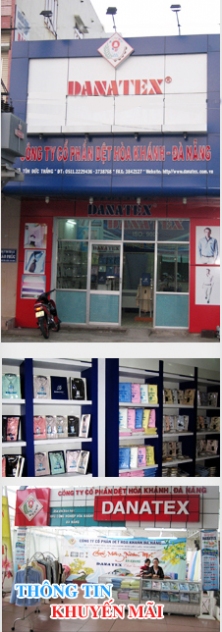Industry
Vietnam garment and textile given “priority” in global supply chain (20/2/2013)
Vietnam’s main export markets like the United States, Europe, Japan and South Korea shrank significantly on reduced consumer demand, but garment, textile and fibre exports still reached US$17.2 billion in 2012. This was the fourth year in a row the garment and textile industry took the lead among the country’s exports, by revenue. The Vietnam Business Forum interviews Mr Le Tien Truong, Vice Chairman of the Vietnam Textile and Apparel Association and Deputy General Director of the Vietnam National Textile and Garment Group (Vinatex). Huong Ly reports.
In 2012, Vietnam’s garment and textile was placed at higher priority by suppliers in the global garment - textile supply chain. So, while the market tended to narrow, weaker countries or bottom-listed countries were cut first by importers. As Vietnam’s garment and textile rose to the priority group, it still kept growth momentum in spite of the downward tendency, he said.
What did the apparel and textile industry do to reoccupy the home market?
Localisation is not an objective, but a solution to increased production efficiency and to sustainable development of the Vietnam National Textile and Garment Group (Vinatex). Domestic revenue reached US$900 million, accounting for 30 per cent of the group’s total revenue, compared with only 15 per cent previously. In product positioning on the domestic market, Vinatex, consisting of more than 100 member companies, is determined to make high-quality products for middle or higher income earners in big cities and townships. We are incapable of covering all classes of products from low to high quality, and reaching all marketplaces like the countryside and out-lying regions.
Garment makers need information about the market for their business to consider development investment.
The garment - textile industry has adopted many employment solutions. What do you think about this?
The garment and textile industry is relatively successful because it has true competitiveness and the market is real, not virtual. That is a necessary condition, along with sufficiently good governance and competitiveness. Perhaps, the greatest success of the garment and textile industry is to maintain employment and incomes for nearly two million workers in the country with an average personal monthly income of nearly VND5 million. This is the biggest well-being the garment and textile industry has made.
Currently, with an export turnover of US$2.6 billion, Vinatex employs just 120,000 workers. Meanwhile, according to industry standards, to earn US$2.6 billion, a company would need 260,000 employees.
Foreign-invested companies are accounting for a big market share in the garment - textile industry. Could they overwhelm domestic enterprises?
The concept of "overwhelm" is completely wrong in this case. No one can dominate others if they have their own capacity and competitiveness. Vietnamese companies are doing business on a level field with FDI competitors on the basis of equal benefit. The difference resulted from the Government's very attractive integration policies, thus creating the opportunity to shift the global supply chain. This is one reason why FDI investment into the garment and textile industry has increased in the past time. While Vietnamese businesses have to accumulate capital or use surplus capital of others to invest in this sector, FDI firms merely shift their capital from one country to another, thus the speed of capital movement is quicker and they can easily hold 55 per cent of market share in Vietnam's garment and textile industry. What we need to pay attention to is to keep FDI investment on the right track as we channel capital flow into places we want, and ensure a fair business environment, and good employment mechanism for workers. For companies like us, we will have no difficulty if we can operate under equal policies with FDI firms.
What are the objectives of the garment and textile industry in 2013?
In 2013, the garment and textile industry strives to earn US$18.5 - 19 billion from exports, up 10 per cent year on year. Vietnam’s key export markets remain the United States, Japan and the EU. Specifically, shipment value to Europe will expand by 5 - 6 per cent, and to the US, by 12 - 14 per cent. It will be very hard to keep 25 per cent growth in exports to South Korea, but we can raise it by an additional US$50 - 200 million. In addition, we must expand garment and textile shipments to new markets. At present, many garment and textile firms have receive enough orders for full operation till the end of the first quarter.
In the coming time, the Vietnamese garment and textile industry will continue implementing strategic objectives it has done in the past 10 years: Improving labour productivity, manufacturing high-grade segments, and utilising the advantage of filling small and medium orders.
2013 will be a year full of economic fluctuations. The entire personnel of the garment and textile industry has recognised right at the beginning of this year that this will be a challenging year that requires us, every minute, every hour and every day, to surmount difficulties and complete plans. We must have practical solutions to market changes, more stringent requirements from customers, more difficult and urgent orders, and even more rapid technological change.
In 2012, Vietnam’s garment and textile was placed at higher priority by suppliers in the global garment - textile supply chain. So, while the market tended to narrow, weaker countries or bottom-listed countries were cut first by importers. As Vietnam’s garment and textile rose to the priority group, it still kept growth momentum in spite of the downward tendency, he said.
What did the apparel and textile industry do to reoccupy the home market?
Localisation is not an objective, but a solution to increased production efficiency and to sustainable development of the Vietnam National Textile and Garment Group (Vinatex). Domestic revenue reached US$900 million, accounting for 30 per cent of the group’s total revenue, compared with only 15 per cent previously. In product positioning on the domestic market, Vinatex, consisting of more than 100 member companies, is determined to make high-quality products for middle or higher income earners in big cities and townships. We are incapable of covering all classes of products from low to high quality, and reaching all marketplaces like the countryside and out-lying regions.
Garment makers need information about the market for their business to consider development investment.
The garment - textile industry has adopted many employment solutions. What do you think about this?
The garment and textile industry is relatively successful because it has true competitiveness and the market is real, not virtual. That is a necessary condition, along with sufficiently good governance and competitiveness. Perhaps, the greatest success of the garment and textile industry is to maintain employment and incomes for nearly two million workers in the country with an average personal monthly income of nearly VND5 million. This is the biggest well-being the garment and textile industry has made.
Currently, with an export turnover of US$2.6 billion, Vinatex employs just 120,000 workers. Meanwhile, according to industry standards, to earn US$2.6 billion, a company would need 260,000 employees.
Foreign-invested companies are accounting for a big market share in the garment - textile industry. Could they overwhelm domestic enterprises?
The concept of "overwhelm" is completely wrong in this case. No one can dominate others if they have their own capacity and competitiveness. Vietnamese companies are doing business on a level field with FDI competitors on the basis of equal benefit. The difference resulted from the Government's very attractive integration policies, thus creating the opportunity to shift the global supply chain. This is one reason why FDI investment into the garment and textile industry has increased in the past time. While Vietnamese businesses have to accumulate capital or use surplus capital of others to invest in this sector, FDI firms merely shift their capital from one country to another, thus the speed of capital movement is quicker and they can easily hold 55 per cent of market share in Vietnam's garment and textile industry. What we need to pay attention to is to keep FDI investment on the right track as we channel capital flow into places we want, and ensure a fair business environment, and good employment mechanism for workers. For companies like us, we will have no difficulty if we can operate under equal policies with FDI firms.
What are the objectives of the garment and textile industry in 2013?
In 2013, the garment and textile industry strives to earn US$18.5 - 19 billion from exports, up 10 per cent year on year. Vietnam’s key export markets remain the United States, Japan and the EU. Specifically, shipment value to Europe will expand by 5 - 6 per cent, and to the US, by 12 - 14 per cent. It will be very hard to keep 25 per cent growth in exports to South Korea, but we can raise it by an additional US$50 - 200 million. In addition, we must expand garment and textile shipments to new markets. At present, many garment and textile firms have receive enough orders for full operation till the end of the first quarter.
In the coming time, the Vietnamese garment and textile industry will continue implementing strategic objectives it has done in the past 10 years: Improving labour productivity, manufacturing high-grade segments, and utilising the advantage of filling small and medium orders.
2013 will be a year full of economic fluctuations. The entire personnel of the garment and textile industry has recognised right at the beginning of this year that this will be a challenging year that requires us, every minute, every hour and every day, to surmount difficulties and complete plans. We must have practical solutions to market changes, more stringent requirements from customers, more difficult and urgent orders, and even more rapid technological change.
More Articles
The textile industry conquers new goals (05/04/2013)
Many Challenges For Vietnamese Textile In 2013 (05/04/2013)
Thông báo tuyển dụng tháng 5/2013
To facilitate the purchase of the company's products Danatex. Our company can offer online ordering method ...
 |
Today 8 visitors |
 |
Visitor: 000120398 |













